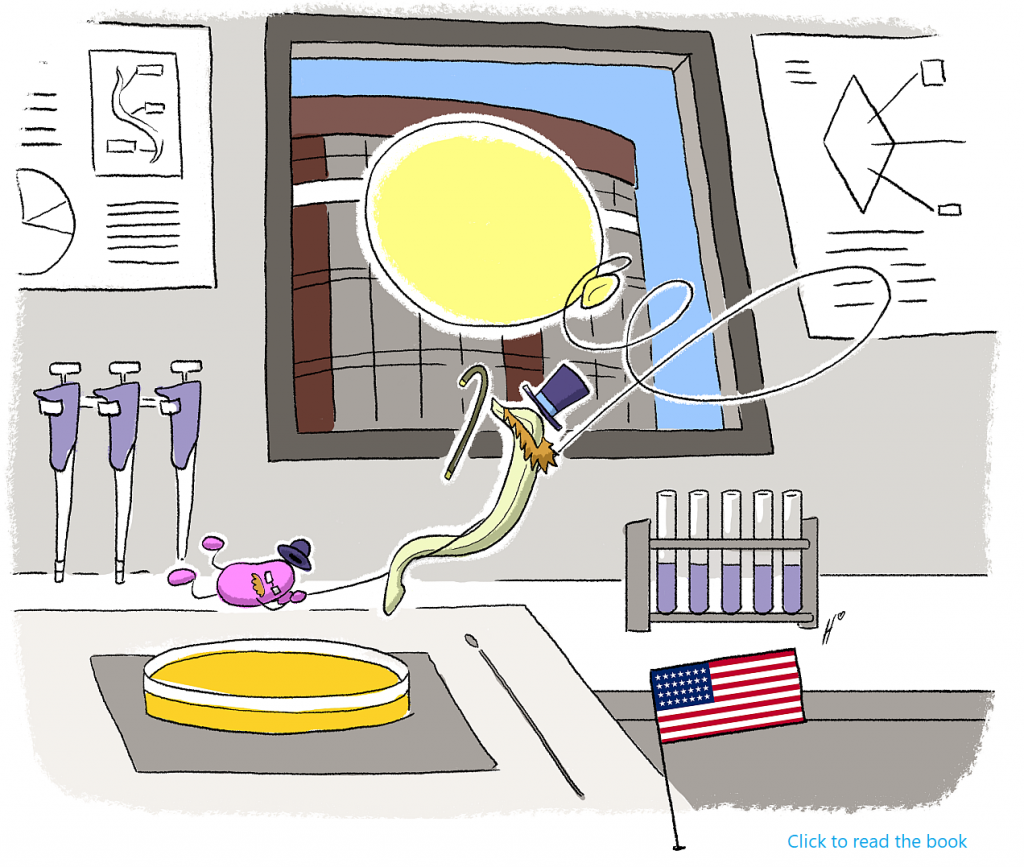
In this episode, Willy Worm decides to travel around the world to meet his relatives. But he will be not alone. Passepartout will accompany him in the adventure.

Caenorhabditis elegans is a free-living transparent nematode about 1 mm length that lives in temperate soil environments. The roundworm C. elegans is routinely fed E. coli in a simplified laboratory environment. It was the first multicellular organism to have its whole genome sequenced, and the first organism to have its connectome completed. Many of the genes in the C. elegans genome have functional counterparts in humans which makes it an extremely useful model for human diseases. C. elegans mutants can be screened with thousands of potential drugs for important diseases (neurological disorders, cancer, and many others) or anti-aging.

One of the most promising translational medicine application’s is the humanization of worms using CRISPR. Humanized worms carry one or more “human” version of genes, and are useful for studying drug effects in a real “personalized” receptor or protein target. As an example, rare disease mutations have proven to be possible to emulate in C.elegans, and today it is a fruitful niche to get interest from a public funding, investors and pharmaceutical companies. If you are thinking to implement a new “personalized medicine model” as fast as possible, keep in mind to outsource worm transgenesis and to implement fast-throughput screening techniques. We are here to help you.

